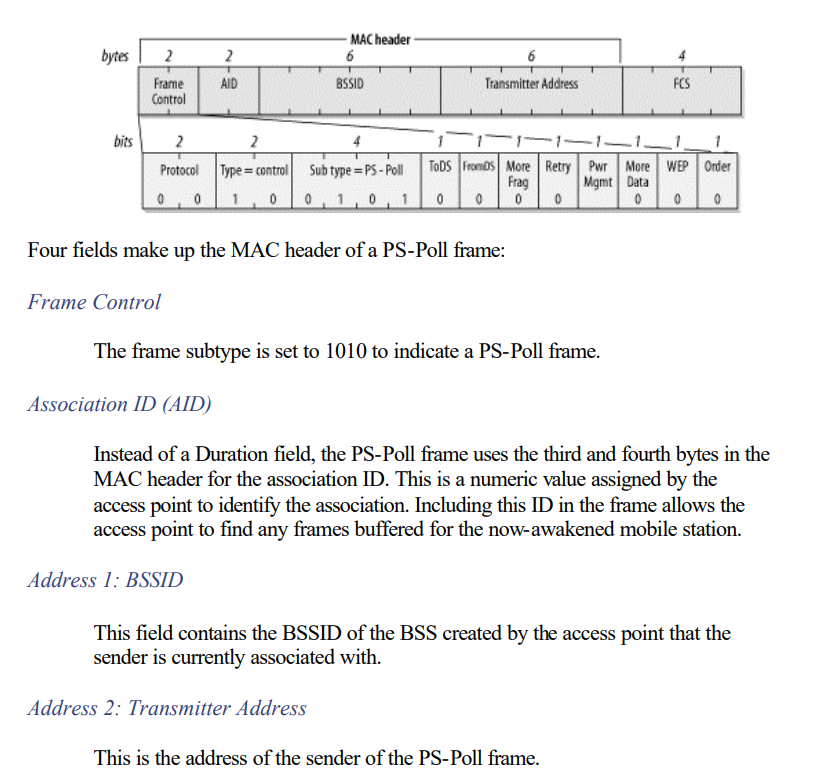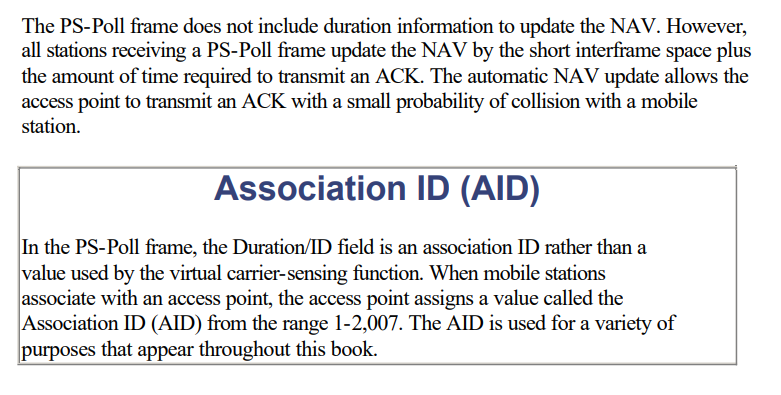802.11 Control Frames - LogeshVel/802.11 GitHub Wiki
Control frames assist in the delivery of data frames. They administer access to the wireless medium (but not the medium itself) and provide MAC-layer reliability functions.
Request to Send (RTS)
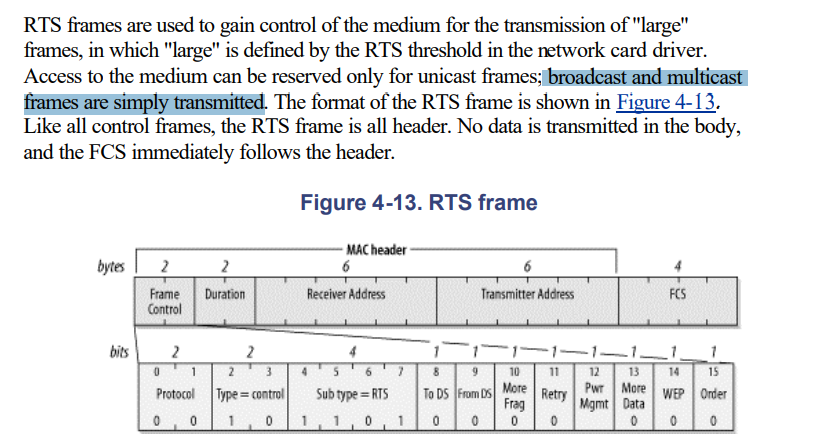
Four fields make up the MAC header of an RTS:
Frame Control
There is nothing special about the Frame Control field. The frame subtype is set to 1011 to indicate an RTS frame, but otherwise, it has all the same fields as other control frames. (The most significant bits in the 802.11 specification come at the end of fields, so bit 7 is the most significant bit in the subtype field.)
Duration
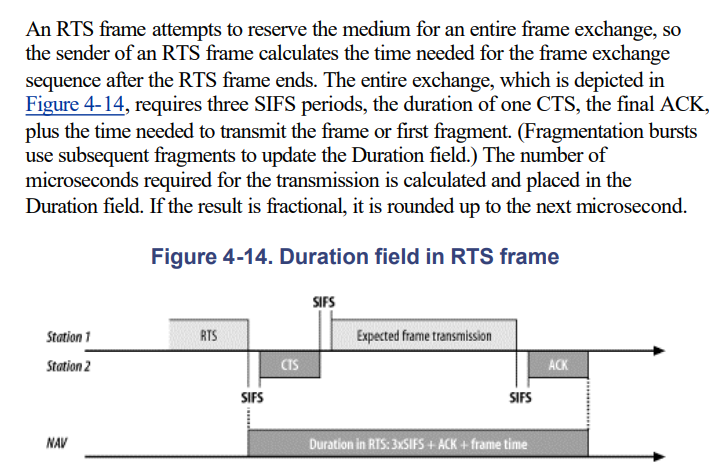
Address 1: Receiver Address
The address of the station that is the intended recipient of the large frame.
Address 2: Transmitter Address
The address of the sender of the RTS frame.
Clear to Send (CTS)
The CTS frame answers the RTS frame.
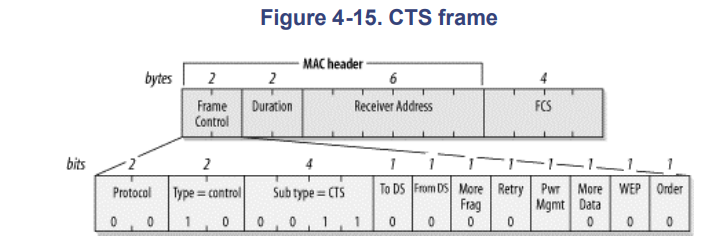
Three fields make up the MAC header of a CTS frame:
Frame Control
The frame subtype is set to 1100 to indicate a CTS frame.
Duration
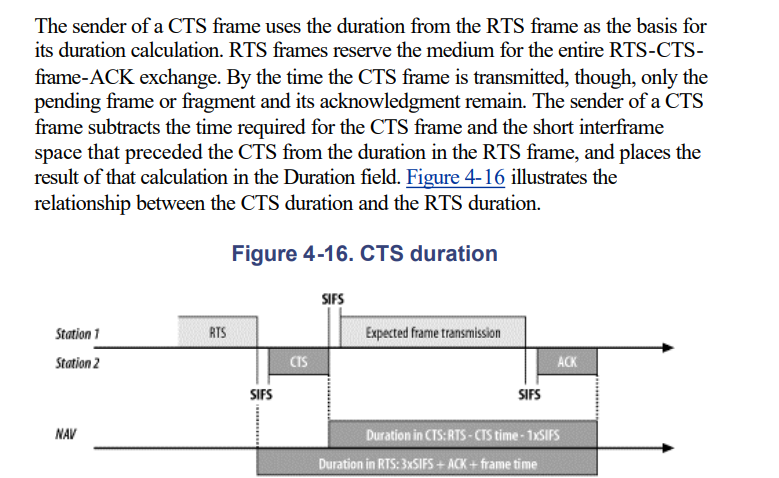
Address 1: Receiver Address
The receiver of a CTS frame is the transmitter of the previous RTS frame, so the MAC copies the transmitter address of the RTS frame into the receiver address of the CTS frame.
Acknowledgment (ACK)
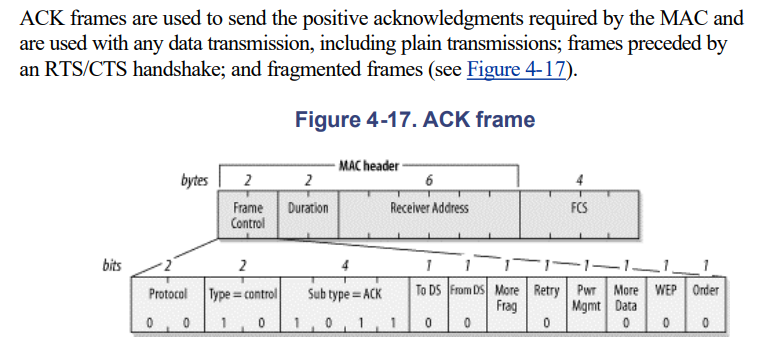
Three fields make up the MAC header of an ACK frame:
Frame Control
The frame subtype is set to 1101 to indicate an ACK frame.
Duration
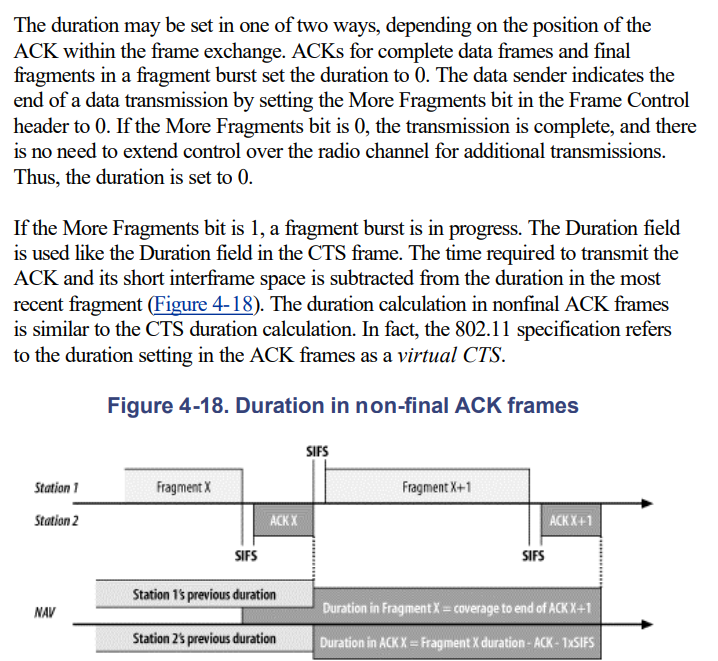
Address 1: Receiver Address
The receiver address is copied from the transmitter of the frame being acknowledged. Technically, it is copied from the Address 2 field of the frame being acknowledged. Acknowledgments are transmitted in response to directed data frames, management frames, and PS-Poll frames.
Power-Save Poll (PS-Poll)
When a mobile station wakes from a power-saving mode, it transmits a PS-Poll frame to the access point to retrieve any frames buffered while it was in power-saving mode.
